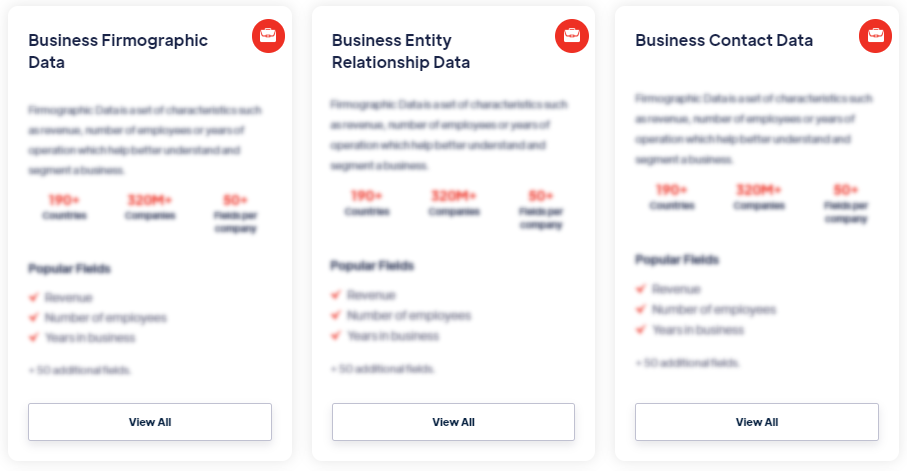Best
Pandas
Products
Pandas is an open-source Python library that provides easy-to-use data structures and data analysis tools for handling structured data. It is widely used in data manipulation, cleaning, exploration, and analysis tasks. Read more
Our Data Integrations


Request Data Sample for
Pandas

Browse the Data Marketplace

Frequently Asked Questions
1. What is Pandas?
Pandas is an
open-source Python library that provides easy-to-use data
structures and data analysis tools for handling structured data.
It is widely used in data manipulation, cleaning, exploration,
and analysis tasks.
2. What are the key features of Pandas?
Pandas offers several key features, including data structures
(Series and DataFrame), data manipulation, missing data
handling, joining and merging, data input/output, time series
analysis, and data visualization.
3. How is Pandas used in data analysis?
Pandas is commonly used in data analysis workflows. It helps in
loading and preprocessing datasets, performing data cleaning and
transformation, and conducting exploratory data analysis. With
its powerful functions and methods, Pandas allows users to
perform tasks like data filtering, aggregation, grouping, and
statistical analysis.
4. What is a DataFrame in Pandas?
A
DataFrame is a two-dimensional tabular data structure in Pandas.
It is similar to a table in a relational database or a
spreadsheet. DataFrames consist of rows and columns, where each
column can have a different data type. They offer flexibility in
indexing and accessing data, making them suitable for analyzing
and manipulating structured data.
5. How is data accessed and manipulated in Pandas?
Data in Pandas can be accessed and manipulated using various
methods and functions. Users can perform operations like
indexing, slicing, filtering, and grouping to extract specific
subsets of data. Pandas provides functions for data sorting,
merging, reshaping, and applying computations or transformations
on data. It also supports methods for handling missing values
and performing statistical analysis.
6. Can Pandas handle large datasets?
While
Pandas is powerful for data analysis, it may have limitations
when dealing with extremely large datasets that exceed available
memory. In such cases, alternative solutions like Dask or Apache
Spark can be more suitable, as they offer distributed computing
capabilities for handling big data. However, Pandas provides
optimizations and techniques like lazy evaluation to handle
large datasets efficiently.
7. Are there any limitations of using Pandas?
Pandas has some limitations to consider. Firstly, it may not be
the best choice for extremely large datasets. Secondly, Pandas
relies on single-threaded execution, so it may not take full
advantage of multi-core processors for certain operations.
Additionally, the performance of some Pandas functions can be
slower compared to optimized libraries like NumPy or specialized
database systems. However, Pandas offers a balance between ease
of use and performance for many common data analysis tasks.
â€
